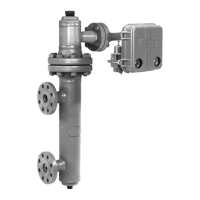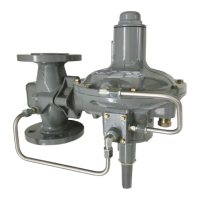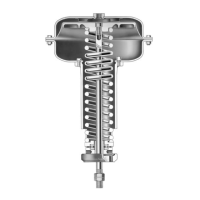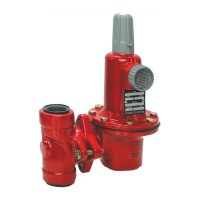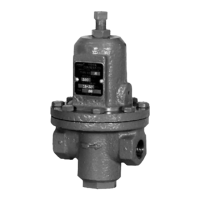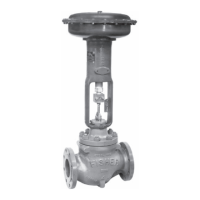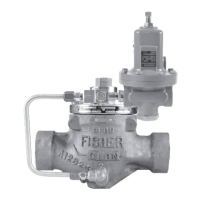Instruction Manual
D103296X012
2052 Actuator
June 2017
6
3. Loosen the cap screw (key 15).
4. Separate the actuator from the valve body by removing the cap screws and nuts which secure the valve to the
mounting yoke (key 27). Proceed to step 5.
If the actuator is not mounted on a valve body ensure the up and down travel stops (see figure 3) are adjusted
correctly to achieve the desired actuator rotation. Use the travel indicator (key 21) and travel scale (key 19) as
reference.
Note
Once each travel stop is properly positioned, adequately tighten the hex nut (key 24) to lock the travel stop in place.
5. Refer to figure 2 and table 4 for available mounting styles and positions. The actuator is normally positioned
vertically with the valve in a horizontal pipeline.
6. Determine whether the actuator mounting yoke (key 27) will be mounted on the end plate assembly (key 3) side or
on the actuator housing boss side of the actuator. If the desired mounting position and style require moving the
mounting yoke (key 27) and travel indicator components to opposite sides of the actuator, remove the machine
screws (keys 20 and 22), the travel indicator scale (key 19), and the travel indicator (key 21). Remove the cap screws
(key 28) and the mounting yoke (key 27). Install the mounting yoke in the desired position (on the end plate
assembly or on the actuator housing boss). Tighten the mounting cap screws to the torque specified in table 6.
Install the travel indicator components on the opposite side of the actuator.
WARNING
To avoid personal injury or property damage, ensure the travel indicator is installed correctly to coincide with the desired
actuator action. Refer to figure 3 for more information.
Figure 3. Fisher 2052 Actuator Travel Stops and Travel Indication
TRAVEL INDICATOR
SCALE
UP
TRAVEL
STOP
DOWN
TRAVEL
STOP
KEY 22
KEY 20
TRAVEL
INDICATOR
INDICATOR
ORIENTATION
FOR PDTC
INDICATOR
ORIENTATION
FOR PDTO
VIEW A
VIEW A
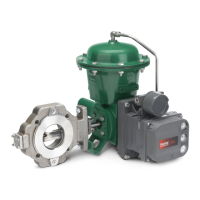
